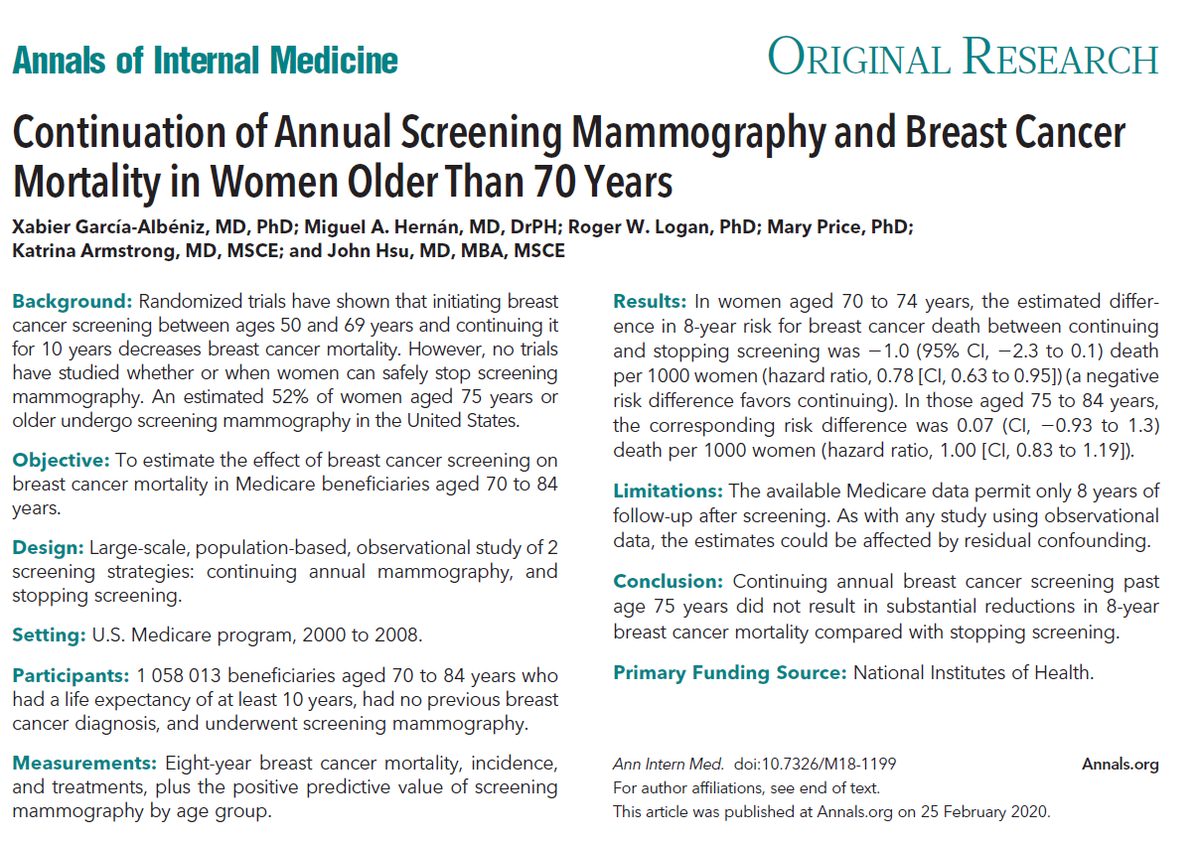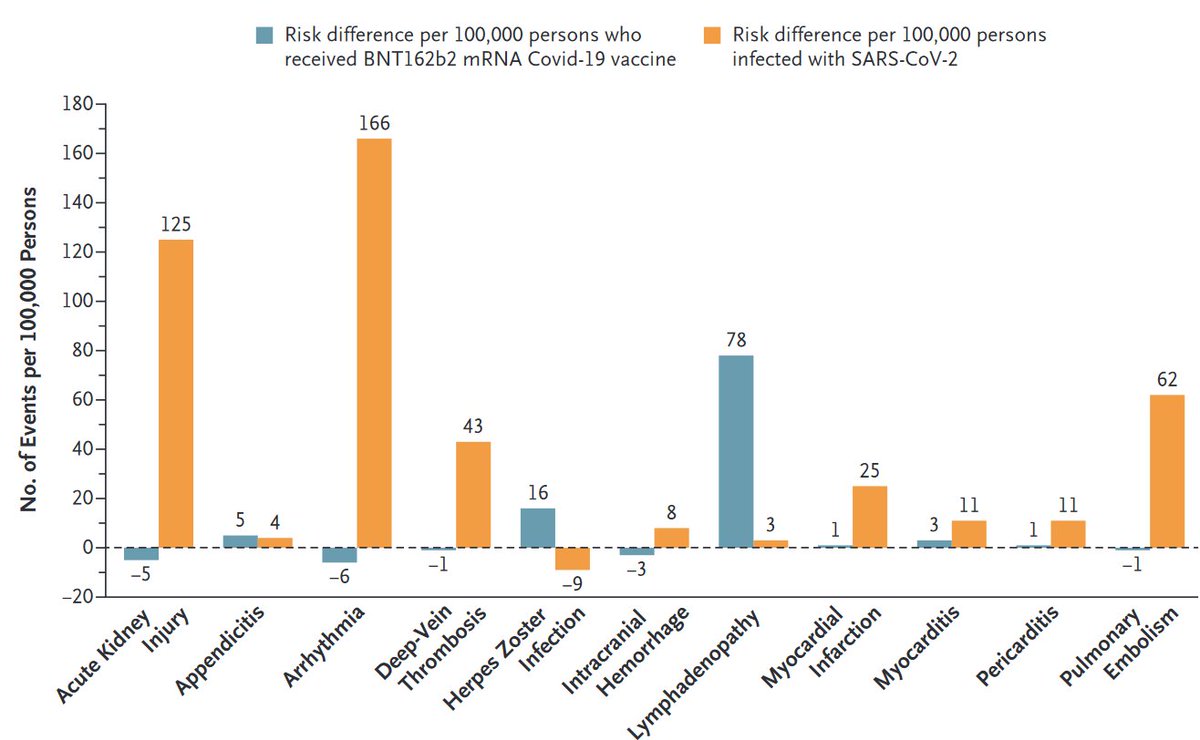#Causalinference that talks the talk and walks the walk.
Claim: "Continuing #breastcancer screening past age 75 doesn't reduce 8-year breast cancer mortality."
Emulation of a #TargetTrial led by @xabieradrian with Medicare data
doi.org/10.7326/M18-11…
Let the discussion start.
Claim: "Continuing #breastcancer screening past age 75 doesn't reduce 8-year breast cancer mortality."
Emulation of a #TargetTrial led by @xabieradrian with Medicare data
doi.org/10.7326/M18-11…
Let the discussion start.

@xabieradrian @AnnalsofIM @HarvardEpi @harvard_data @HarvardBiostats @HarvardChanSPH @CMSGov @CMSgovPress @MonganInstitute @MassGeneralNews 2)
Because there's so much talk about #causalinference around here.
Computer scientists, economists, statisticians... talk a lot about the merits of #DeepLearning, instrumental variables, or whatever their preferred methodology is.
Everybody: This is your chance to shine.
Because there's so much talk about #causalinference around here.
Computer scientists, economists, statisticians... talk a lot about the merits of #DeepLearning, instrumental variables, or whatever their preferred methodology is.
Everybody: This is your chance to shine.

3)
No more toy examples. A real world question:
"At what age should #breastcancer screening stop?"
Need to compare the mortality of women under two dynamic screening strategies using a database of insurance claims with time-varying treatments and confounders.
How'd you do it?
No more toy examples. A real world question:
"At what age should #breastcancer screening stop?"
Need to compare the mortality of women under two dynamic screening strategies using a database of insurance claims with time-varying treatments and confounders.
How'd you do it?

4)
We specified a pragmatic #TargetTrial with sustained treatment strategies (dynamic screening strategies) and emulated it explicitly using #observational data from #Medicare.
We used cloning + censoring + #IPweighting to adjust for time-varying confounders.
And we concluded:
We specified a pragmatic #TargetTrial with sustained treatment strategies (dynamic screening strategies) and emulated it explicitly using #observational data from #Medicare.
We used cloning + censoring + #IPweighting to adjust for time-varying confounders.
And we concluded:

5)
Experts who are very active on Twitter:
Is our answer to this public health question wrong?
What could we have done better? Downplay #epidemiology principles and use more #AI or instrumental variables?
If so, please DO IT and let us know what you find.
Help us or shut up.
Experts who are very active on Twitter:
Is our answer to this public health question wrong?
What could we have done better? Downplay #epidemiology principles and use more #AI or instrumental variables?
If so, please DO IT and let us know what you find.
Help us or shut up.
• • •
Missing some Tweet in this thread? You can try to
force a refresh








